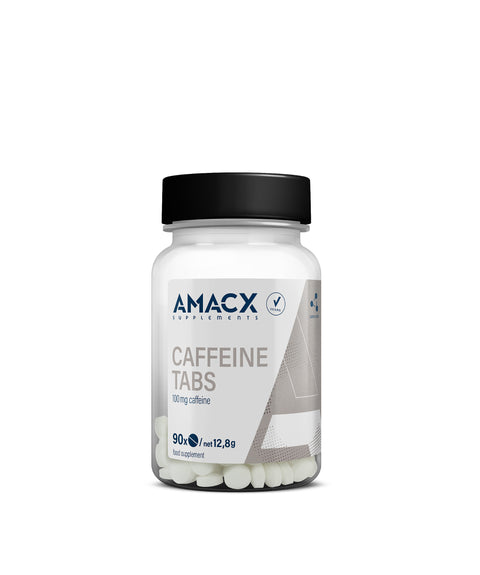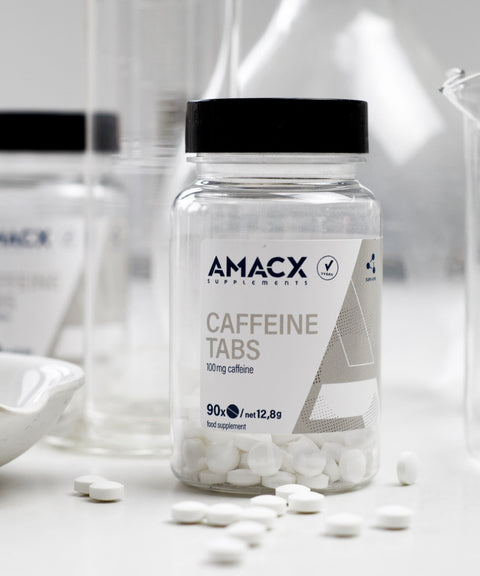Written by: Martijn Redegeld
Popeye ate cans of spinach to get his iron. Although he might have been better off choosing other products, his intentions were good. Iron is an essential mineral for everyone and a daily intake is crucial to prevent anaemia, for example. For endurance athletes, iron plays an even more important role in good athletic performance. Read all about Popeye's good intentions in this blog!
We only need a very small amount of iron every day. It is essential for the formation of haemoglobin, a component of red blood cells. Red blood cells transport oxygen through our bodies. Iron also plays a role in energy production in our bodies and in the proper functioning of the immune system. The recommended daily intake varies from 11 mg per day for men to 16 mg per day for women. A deficiency can therefore lead to a reduced transport of oxygen through the body, which can manifest itself in a listless and tired feeling. In such a case, it may be a case of anaemia.
We can obtain iron naturally from our food. A distinction is made between two types: haem iron and non-haem iron. Haem iron is better absorbed by our body than non-haem iron. Haem iron is only found in animal products, such as meat and fish, especially beef and lamb. Non-haem iron is also found in plant-based products such as wholemeal products, legumes and green vegetables. The table below shows some examples of iron-rich foods.
| Product | Amount of iron (mg) |
|---|---|
| 1 piece of beef (100g) | 3.4 |
| 1 portion of chicken fillet (100g) | 0.8 |
| 1 salted herring | 1.1 |
| 1 portion of tofu (100g) | 2.1 |
| 1 tablespoon of cooked spinach | 1.7 |
| 1 handful of cashew nuts | 1.7 |
| 1 slice of whole wheat bread | 0.7 |
The recommended daily intake for women is slightly higher because they are generally at greater risk of iron deficiency. This is mainly due to blood loss during menstruation. Iron requirements are also increased during pregnancy or when breastfeeding. Vegetarians also need to pay extra attention to their iron intake. Because they only ingest non-haem iron, which is less easily absorbed, they are also more susceptible to iron deficiency. Endurance athletes are also at risk of iron deficiency. This is due to an increased inflammatory response after exercise, which inhibits the absorption of iron in the hours after a workout. In addition, long-distance runners have an extra increased risk due to the frequent impact on their feet. This destroys red blood cells locally, requiring extra iron to repair them.
Athletes who go on altitude training courses also have an increased need for iron. Because of the lower oxygen pressure at altitude, the body starts to produce more red blood cells to compensate. This natural reaction of the body is the reason that athletes go to altitude; a greater quantity of red blood cells means an increased capacity to transport oxygen through the body. At sea level, this gives a performance advantage in various endurance sports. However, to properly support the production of red blood cells, a higher iron intake is also necessary. Therefore, start taking 50 to 100 mg of iron (1-2x Amacx Ijzer) per day, always in the morning before breakfast, two weeks before your altitude training. Continue this until one week after returning to sea level. To optimise the intake, ideally wait to take it until after coffee, tea and dairy products. The Amacx Iron also contains a small amount of vitamin C, which promotes its absorption in the body.
It is important to have your blood status checked regularly, especially if you belong to one of the risk groups. When you do this, it is best to do it in the morning at a time when you are well hydrated and preferably 12 to 24 hours after you have exercised. The table below shows the reference values used in science to determine iron deficiency. Do you fall into category 1? Then the daily intake of 1 capsule of Amacx Iron can help you improve your iron status. If you fall into category 2 or 3, it is recommended that you make a plan with your doctor to improve this.
| Category | Serum ferritin (µg/L) | Hemoglobin concentration (g/L) | Transferrin saturation (%) |
|---|---|---|---|
| 1 | <35 | >115 | >16 |
| 2 | <20 | >115 | <16 |
| 3 | <12 | <115 | <16 |
In summary:
-
Iron is a mineral that everyone needs. Iron plays a particularly important role in the transport of oxygen in the blood via the red blood cells. This is especially important for endurance athletes.
-
We can obtain iron from our diet in the form of haem and non-haem iron. The latter is slightly less easily absorbed and is found in vegetable products.
-
Women, vegetarians and endurance athletes are at risk of iron deficiency because they have a higher rate of iron loss through the blood and/or a reduced intake. It is therefore particularly important for them to have their iron status regularly checked in the blood.
-
Athletes who go to high altitude training camps also need to increase their iron intake to properly support the production of red blood cells at altitude. Ideally, you should start taking this supplement two weeks before your altitude training camp and continue for one week afterwards.
-
If your blood analysis shows an iron deficiency, Amacx Ijzer can help bring it back up to par.












